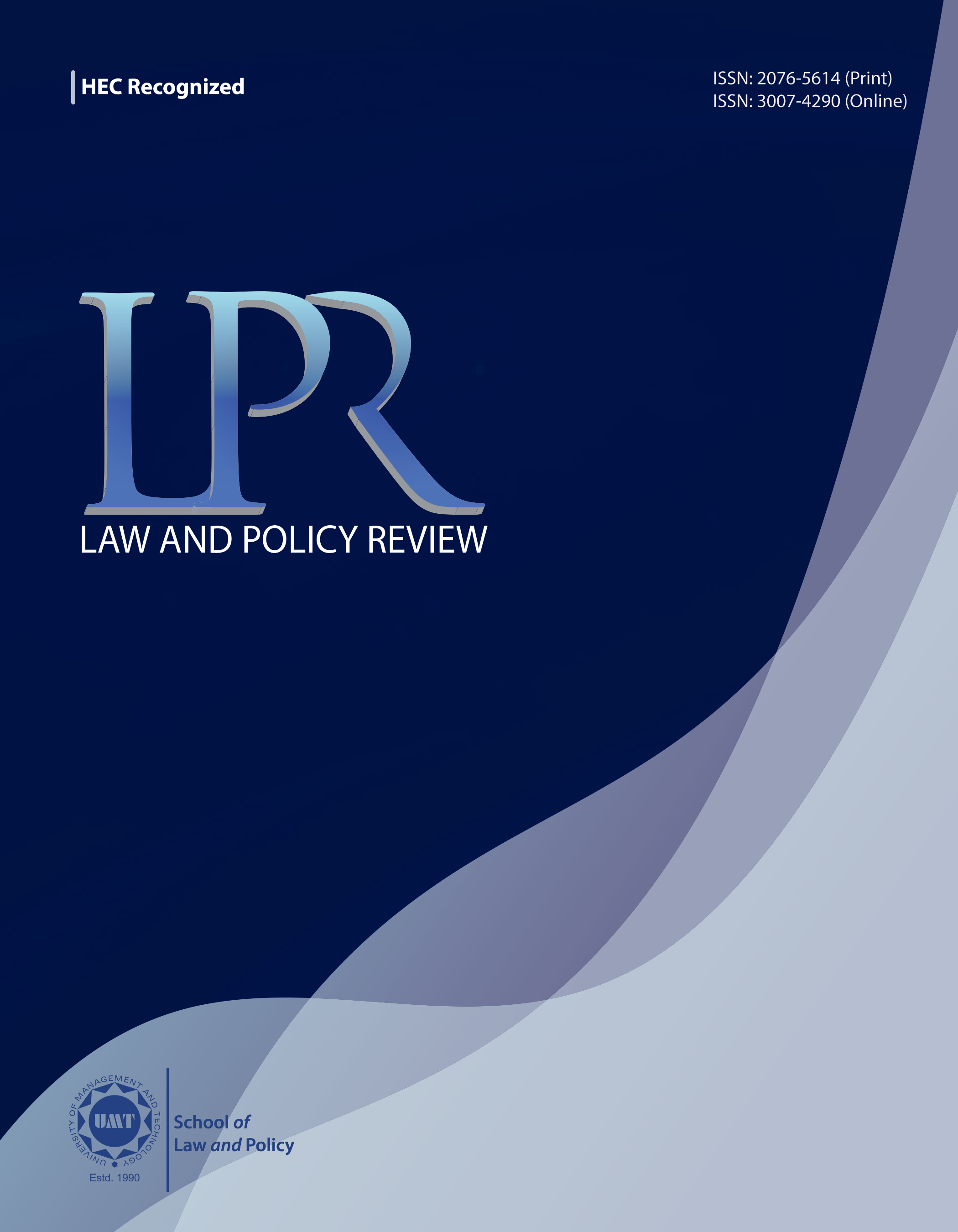Alternative Dispute Resolution in Pakistan: An Implementation Perspective
Abstract
 Abstract Views: 0
Abstract Views: 0
This paper outlines the successful aspects of Alternative Dispute Resolution, the struggles it faces, and the efforts made toward its implementation. Through thematic content analysis, this study highlights the shortcomings of the judiciary system, including concerns regarding weak institutional practices and public behavior towards litigation. The research examines how the weak application process of Alternative Dispute Resolution and chronic proceedings in court cases have severely affected the justice system of Pakistan. Although some attempts have been made in favor of ADR in recent years, there is still a dire need to improve its implementation. The study also discusses local forms of ADR currently practiced in various regions of the country, particularly through which tribes and communities resolve their conflicts. Additionally, some organizations and multinational companies have successfully settled down disputes using ADR proceedings. The paper concludes with practical solutions and recommendations to enhance the use and effectiveness of ADR in the country.
Downloads
References
Abbasi, G. N. (2021, October 1). ADR mechanism. Dawn. https://www.dawn.com/news/1649473
Ali, M., & Geng, L. L. (2019). Alternative dispute resolution (ADR) in Pakistan: The role of lawyers in mediation procedure. International Journal of Research, 6(4), 421–430.
Asad, M. (2018, January 21). Over 1.8 million cases pending in Pakistan’s courts. Dawn. https://www.dawn.com/news/1384319
Bhatti, H. (2018, August 30). Jirga rulings on criminal cases 'against fundamental human rights': CJP. Dawn. https://www.dawn.com/news/1429899
Braun, V., & Clarke, V. (2012). Thematic analysis. In H. Cooper (Ed.), APA handbook of research methods in psychology: Research designs (pp. 57–71). American Psychological Association.
Chattha, H. S. (2019, February 21). Modern justice system and Pakistan. Daily Times. https://dailytimes.com.pk/356867/modern-justice-system-and-pakistan/
Human Rights Commission of Pakistan. (2017). Annual reports. https://hrcp- web.org/hrcpweb/annual-reports/
Joffe, H. (2012). Thematic analysis. In D. Harper & A. R. Thompson (Eds.), Qualitative research methods in mental health and psychotherapy: A guide for students and practitioners (pp. 210–223). Wiley Online Library.
Malik, B. N. (2021, January 31). Dispute resolution. Dawn. https://www.dawn.com/news/1604631
Mnookin, R. H. (1998). Alternative dispute resolution. Harvard Law School. http://www.law.harvard.edu/programs/olin_center/papers/pdf/232.pdf
Senate of Pakistan. (2017). Senate secretariat services act, 2017. https://senate.gov.pk/uploads/documents/1497249886_554.pdf
Shah, W. A. (2021, May 24). Three different laws in vogue for alternate dispute resolution. Dawn. https://www.dawn.com/news/1625354
Siddiqah, A., & Mukhtar, M. (2019). Enactment and enforcement of protective legislation for women in Pakistan. Social Science Research Network. https://papers.ssrn.com/sol3/papers.cfm?abstract_id=4290011
United Nations Development Programme. (2013). The rule of law. https://www.undp.org/sites/g/files/zskgke326/files/migration/pk/DAP-Vol4-TheRuleofLaw.pdf
Weinstein International Foundation. (2022). Pakistan. https://weinsteininternational.org/pakistan/
Won, S. K. (2013). Overview of alternate dispute resolution with special reference to arbitration laws in Pakistan. Journal of Arbitration Studies, 23(1), 149–167.
Copyright (c) 2025 Rameen Javed

This work is licensed under a Creative Commons Attribution 4.0 International License.
LPR follow an open-access publishing policy and full text of all published articles is available free, immediately upon publication of an issue. The journal’s contents are published and distributed under the terms of the Creative Commons Attribution 4.0 International (CC-BY 4.0) license. Thus, the work submitted to the journal implies that it is original, unpublished work of the authors (neither published previously nor accepted/under consideration for publication elsewhere). On acceptance of a manuscript for publication, a corresponding author on the behalf of all co-authors of the manuscript will sign and submit a completed the Copyright and Author Consent Form.





